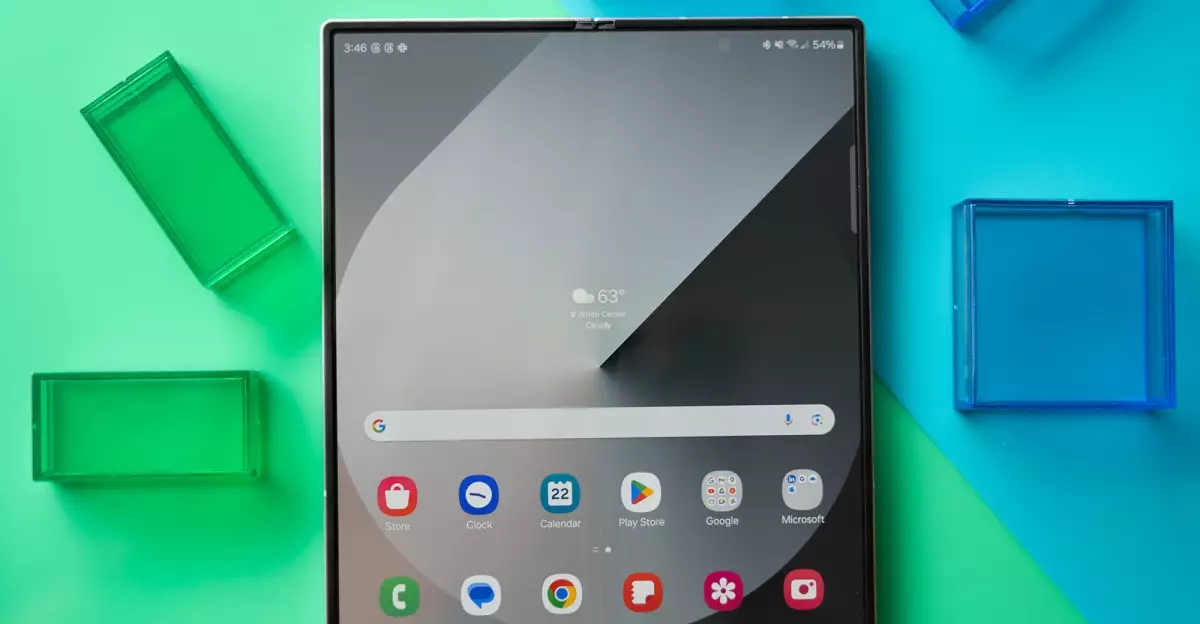Despite the excitement surrounding foldable technology, the adoption rates remain surprisingly sluggish. Samsung, the market leader in this segment, has been pioneering the foldable revolution for more than a decade, yet the sales figures don’t quite reflect the enthusiasm they aim to generate. The core issue is not a lack of innovation or marketing efforts but rather a treacherous combination of high prices, durability concerns, and limited consumer familiarity. Foldables are often seen as niche devices, bought more out of curiosity than necessity. They tend to occupy a fragile space—caught between novelty and practicality.
The market share of foldable smartphones remains a tiny sliver—roughly 1.5 percent globally, according to TrendForce. Even in markets where Samsung has aggressively promoted its foldables, the uptake is underwhelming. This signals a fundamental problem: consumers are intrigued but hesitant to take the plunge. Concerns about fragility, repair costs, and the perceived inconvenience of adapting to a new form factor hinder broader acceptance. Samsung’s attempts to refine their lineup have mostly been incremental, with each iteration offering minimal transformative improvements. This slow pace of innovation can be perceived as stagnation, leading to consumer skepticism and a sense of “been there, done that.”
Samsung’s Recent Innovations: Are They Enough to Ignite Consumer Interest?
Samsung’s upcoming flagship foldables may finally challenge the status quo with a series of strategic upgrades. The anticipated Ultra variant aims to elevate the foldable experience by introducing a thinner, more pocket-friendly profile, possibly matching the sleek designs from competitors like Honor and Oppo. The inclusion of a larger, Razr-style cover display on the Z Flip 7 promises to enhance usability, reducing the reliance on unfolding for quick interactions. These enhancements seem aligned with consumer demands for durability, convenience, and value.
However, mere incremental improvements—like better screens or thinner profiles—might not be enough to move the needle significantly. The fundamental issues persist: foldables are still more fragile, prone to dust ingress and costly repairs. Samsung’s inability to deliver a truly water- and dustproof device with an IP68 rating, despite promising such features years ago, remains a blemish. Consumers rightfully question whether a premium device that’s more delicate and expensive to fix is worth their investment, especially when traditional flagship phones continue to evolve rapidly in durability and performance.
The price point remains a critical barrier. Even with new models potentially coming at slightly lower or more competitive prices, foldables are still positioned as premium devices. This premium pricing amplifies the risk for mainstream consumers who might prefer the familiarity and reassurance of traditional slab-style phones. Without a compelling value proposition—something beyond “Wow, it folds”—the market will continue to be dominated by early adopters and tech enthusiasts rather than mass consumers.
The Potential Game-Changer: Will Apple’s Entry Open the Floodgates?
All eyes are now watching rumors of an Apple foldable that could debut around 2026. The potential arrival of an “iFold” or similar device is more than just industry gossip; it’s a catalyst that could redefine the market landscape entirely. Apple’s massive ecosystem, brand loyalty, and history of innovation suggest that if they decide to enter the foldable arena, it could accelerate widespread adoption dramatically.
An Apple foldable could bring several advantages that Samsung’s current lineup struggles to match. We can expect superior build quality, innovative hinge technology, and a more refined approach to durability and user experience. Such a device might also come with Apple’s marketing prowess and ecosystem advantages that encourage consumers to think beyond the novelty and see foldables as a viable everyday device. Additionally, Apple’s entry could create a ripple effect, compelling Samsung and others to innovate more aggressively, fuel market growth, and reduce prices through increased competition.
This shift could be transformative, not only in expanding the market size but also in altering consumer perceptions. When a trusted brand like Apple wades into the foldable waters, skepticism diminishes. The industry’s collective focus might shift from gimmickry and incremental upgrades to meaningful innovations that address durability, cost, and user experience holistically.
Can Samsung Break Free from Its Own Inertia?
Samsung’s strategy of introducing multiple models across the price spectrum and emphasizing ultra-high-end specs might find some success—but only if these devices genuinely address consumers’ primary concerns. An ultra-premium foldable with superior durability, better battery life, and more innovative hinge technology could tempt hesitant buyers. However, whether high-end specifications alone will spark mass adoption remains questionable.
The company’s ongoing challenge is balancing innovation with practicality. Consumers need reassurance that their investment in a foldable won’t turn into a costly repair bill in a few years or get damaged by dust and moisture. To truly push the market forward, Samsung must prioritize durability, affordability, and seamless usability. This might mean abandoning the pursuit of ultra-thin profiles at all costs if it compromises device robustness.
Ultimately, Samsung’s future in foldables hinges on their willingness to take risks—beyond incremental improvements. They need to unlock new design philosophies or materials that can withstand the rigors of daily use while maintaining the foldable form factor’s inherent appeal. Only then can they turn the foldable device from a cutting-edge curiosity into a mainstream staple.
While Samsung is clearly investing in innovation and teasing bold new models, the road ahead isn’t guaranteed. Market acceptance depends less on technological finesse and more on addressing core consumer concerns—durability, cost, and usability. The industry awaits a true game-changer, perhaps on the horizon with Apple’s rumored entrance, that could finally propel foldables from niche novelty to everyday necessity.

